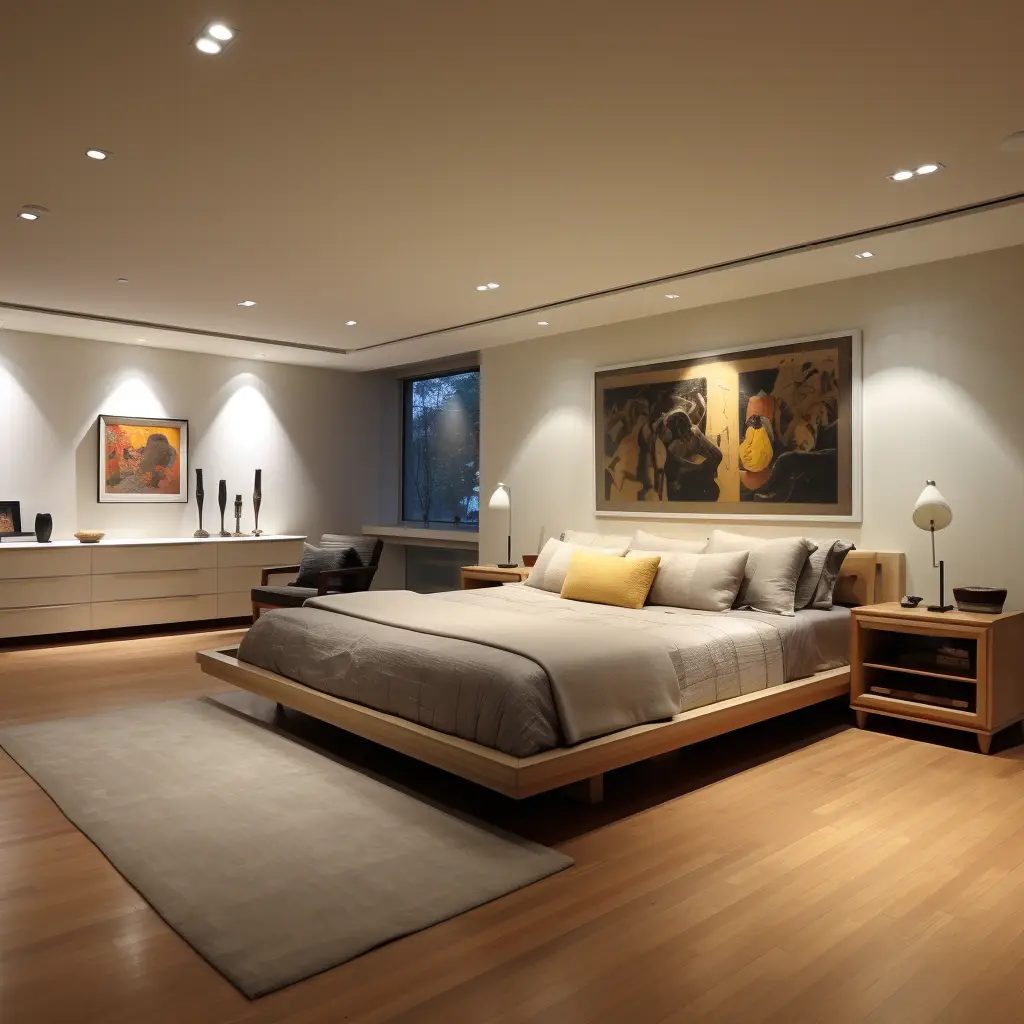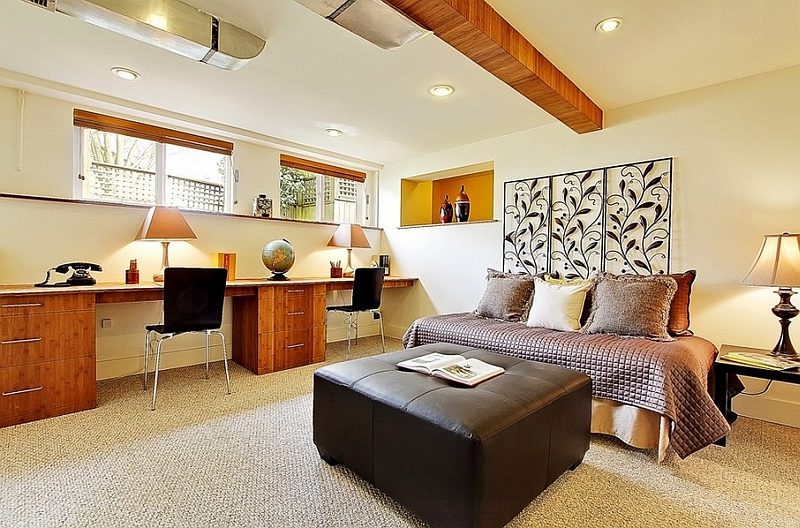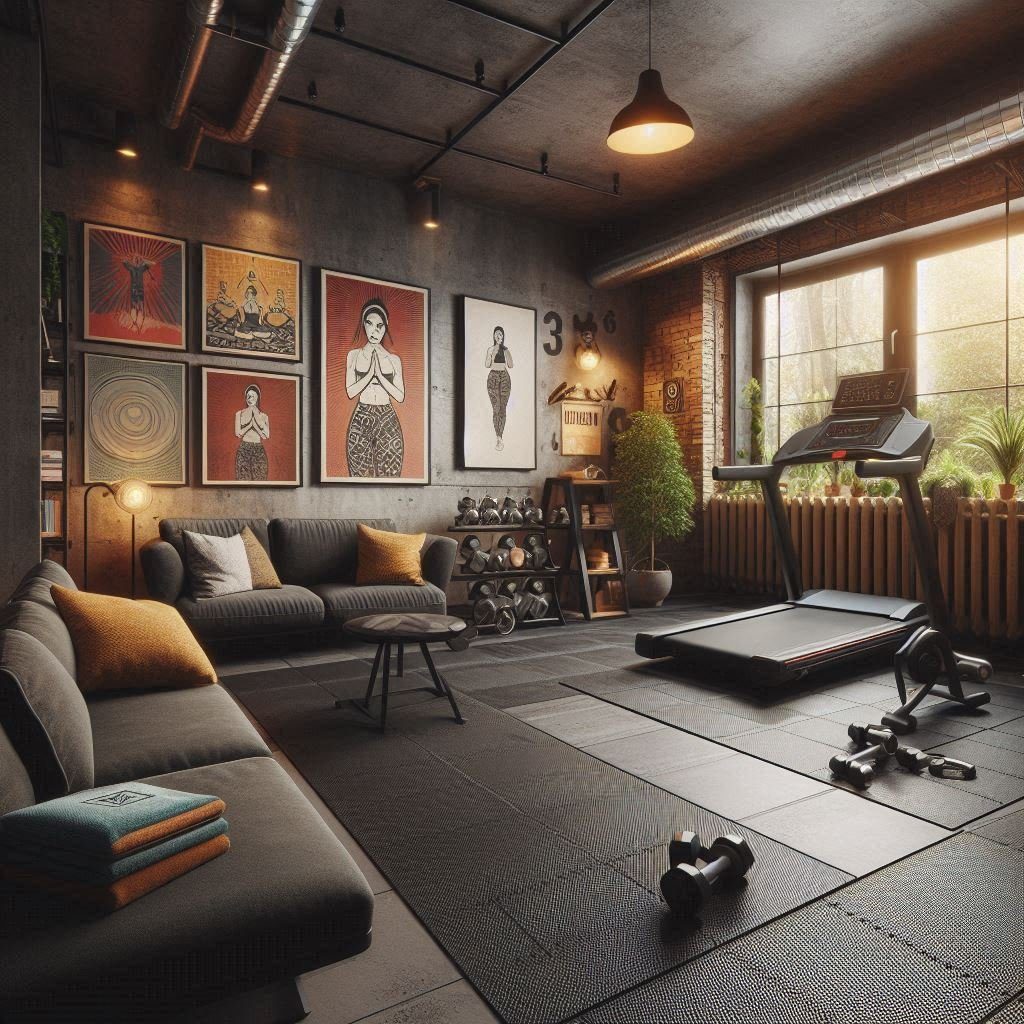Transforming a basement into a bedroom is an ingenious way to maximize your home’s living space, offering a unique and often overlooked sanctuary that blends functionality with creativity.
The subterranean environment presents a distinctive canvas for interior design, challenging homeowners to transcend traditional bedroom aesthetics while navigating distinctive architectural constraints.
Basement Bedroom Ideas
With meticulous planning and innovative design strategies, a basement bedroom can evolve from a mundane, utilitarian space into a captivating, comfortable retreat that defies expectations and provides an exceptional living solution for various household needs.
1. Industrial Chic Basement Bedroom

Embracing the inherent architectural elements of a basement can create a stunning industrial-inspired bedroom design. Exposed brick walls, concrete floors, and visible ductwork become intentional design features that add character and authenticity to the space. The raw, unfinished surfaces provide a compelling backdrop for carefully curated furnishings and textural elements.
By incorporating soft textiles like plush area rugs, velvet throw pillows, and luxurious bedding, you can soften the hard industrial surfaces. Metal-framed beds, minimalist lighting fixtures, and strategic use of warm neutral tones can transform the industrial aesthetic from cold to inviting, creating a sophisticated and modern sleeping environment.
2. Cozy Scandinavian Minimalist Retreat

Scandinavian design principles offer an exceptional approach to basement bedroom transformation, emphasizing simplicity, functionality, and warmth. Light color palettes, primarily whites and soft grays, can effectively counteract the potentially dark basement environment. Minimalist furniture with clean lines and multipurpose designs maximize the available space while maintaining an uncluttered aesthetic.
Natural wood elements, such as light oak flooring or wooden bed frames, introduce warmth and organic texture. Strategic lighting, including wall-mounted reading lights and soft ambient floor lamps, can create depth and eliminate the potential for a sterile or cold atmosphere. Incorporate wool throws, textured cushions, and minimal artwork to enhance the room’s comfort and visual interest.
3. Bohemian Underground Sanctuary

A bohemian-inspired basement bedroom celebrates eclectic design, vibrant colors, and layered textures. This approach allows for maximum creativity and personal expression, transforming the potentially restrictive basement space into a deeply personalized sanctuary. Utilize rich, jewel-toned textiles, macramé wall hangings, and an array of patterned cushions to create visual depth and warmth.
Floor cushions, low-profile furniture, and hanging plants can help soften the structural limitations of a basement bedroom. Consider incorporating vintage rugs, moroccan-inspired lanterns, and globally sourced decorative elements to create a sense of wanderlust and artistic freedom. The key is to use color, texture, and unconventional design elements to distract from the room’s underground location.
Related Guide: 14 Tiny Guest Bedroom Ideas
4. Modern Minimalist Basement Bedroom

Modern minimalism offers a sleek and sophisticated approach to basement bedroom design. Focus on creating a clean, uncluttered environment with a monochromatic color scheme and streamlined furniture. Utilize built-in storage solutions to maintain a smooth, uninterrupted visual landscape that maximizes available space.
Select furniture with slim profiles and hidden storage capabilities. Platform beds with integrated drawers, wall-mounted nightstands, and recessed lighting can create a sense of spaciousness. Choose a limited color palette of whites, grays, and blacks, with occasional metallic accents to add visual interest without overwhelming the space.
5. Rustic Farmhouse Basement Retreat

A rustic farmhouse-style basement bedroom can introduce warmth and charm to an otherwise utilitarian space. Utilize reclaimed wood elements, such as shiplap walls or wooden beam accents, to create texture and visual interest. Soft, muted color palettes in creams, sage greens, and warm browns can help create a serene and inviting atmosphere.
Incorporate vintage-inspired furniture pieces like wrought iron bed frames, antique dressers, and distressed wooden side tables. Soft linen bedding, chunky knit throws, and botanical prints can enhance the room’s organic, comfortable feel. Strategically placed lighting with warm-toned bulbs can further soften the basement’s inherent coolness.
6. Luxurious Basement Master Suite

Transform your basement into a luxurious master suite by focusing on high-end finishes and sophisticated design elements. Consider installing heated flooring to combat the natural coolness of basement environments. Use rich, deep color palettes like navy blue, emerald green, or burgundy to create a sense of opulence.
Invest in high-quality bedding, custom window treatments, and statement lighting fixtures. A California king-sized bed with premium linens, a sitting area with plush armchairs, and a small workspace can elevate the basement bedroom into a comprehensive, luxurious retreat. Soundproofing and professional lighting design can further enhance the space’s comfort and functionality.
7. Teen-Friendly Basement Bedroom

Design a basement bedroom that caters specifically to teenage preferences, combining functionality with personal expression. Create distinct zones within the space for sleeping, studying, and relaxation. Use modular furniture that can be easily reconfigured as their interests and needs change.
Incorporate technology-friendly features like built-in charging stations, smart lighting systems, and space for gaming or multimedia setups. Allow personalization through removable wall decals, gallery walls for artwork, and flexible storage solutions. Choose durable, easy-to-clean materials that can withstand the dynamic lifestyle of a teenager.
8. Guest Room with Multipurpose Functionality

A basement bedroom designed for guests should prioritize comfort and versatility. Select a high-quality Murphy bed or a sophisticated sleeper sofa that can be easily transformed when needed. This approach allows the space to serve multiple functions beyond accommodating overnight visitors.
Create a welcoming environment with neutral color schemes, comfortable bedding, and thoughtful amenities like reading lights, side tables, and space for luggage. Include a small workspace or seating area that can be used when the room is not serving as a guest bedroom. Consider adding blackout curtains and excellent soundproofing to ensure guest comfort.
9. Natural Light Maximization Strategy

Despite basement limitations, creative strategies can introduce natural light and prevent the space from feeling claustrophobic. Install larger egress windows or window wells to maximize natural illumination. Use light-reflecting paint colors and strategically placed mirrors to amplify existing light sources.
Consider installing light tubes or solar tubes that capture and redirect natural sunlight from above-ground levels. Supplement natural light with layered artificial lighting, including recessed ceiling lights, floor lamps, and wall sconces. Choose light, reflective color palettes that help brighten the space and create an illusion of openness.
10. Sustainable Eco-Friendly Design

Create an environmentally conscious basement bedroom by focusing on sustainable materials and energy-efficient design principles. Use recycled or reclaimed materials for flooring, wall treatments, and furniture. Choose low-VOC paints, organic bedding, and furniture made from sustainable sources.
Implement energy-efficient lighting solutions like LED fixtures and smart home technology to reduce energy consumption. Consider adding indoor plants that improve air quality and introduce natural elements. Use natural fiber rugs, bamboo window treatments, and cork flooring to enhance the room’s ecological design.
Related Guide: 15 Primary Bedroom Ideas
11. Home Office Hybrid Basement Bedroom

Design a flexible basement space that seamlessly combines sleeping and working environments. Use room dividers, strategic furniture placement, or sliding panels to create distinct work and rest zones. Select a Murphy bed or a high-quality sofa bed to maximize floor space during working hours.
Invest in ergonomic furniture, excellent task lighting, and soundproofing to create an effective workspace. Include built-in storage solutions that can accommodate both professional equipment and personal items. Choose a neutral color palette that promotes productivity while maintaining a comfortable sleeping environment.
12. Athletic Recovery Room

Transform the basement bedroom into a specialized recovery and relaxation space for athletes or fitness enthusiasts. Include features like a high-quality mattress designed for muscle recovery, space for foam rollers and stretching, and potential areas for light exercise or meditation.
Install blackout curtains to support optimal sleep cycles, and use color psychology principles to create a calming environment. Consider adding a small refrigerator for hydration, recovery supplements, and temperature-controlled storage. Incorporate moisture-wicking bedding and ergonomic furniture to support physical recovery.
13. Art Studio Meets Bedroom

Combine artistic creativity with sleeping functionality by designing a basement bedroom that serves as both a personal studio and restful retreat. Use modular furniture that can be easily moved or transformed to accommodate different creative pursuits. Install ample storage for art supplies and create dedicated workspace areas.
Choose durable, easy-to-clean flooring and wall treatments that can withstand potential artistic mishaps. Use adjustable lighting systems that can transition between soft ambient illumination for relaxation and bright, focused lighting for creative work. Allow plenty of wall space for artwork display and inspiration.
14. Musical Soundproof Haven
For musicians or music lovers, design a basement bedroom that offers both excellent sound isolation and a comfortable sleeping environment. Invest in professional soundproofing materials for walls, floors, and ceilings to prevent sound transmission and external noise intrusion.
Include built-in storage for musical instruments, a dedicated practice area, and high-quality acoustic treatments. Choose sound-absorbing materials for flooring and wall coverings that enhance the room’s acoustic properties. Create a versatile space that supports both musical creativity and restful sleep.
Conclusion
Transforming a basement into a functional and stylish bedroom requires creativity, strategic planning, and a deep understanding of design principles. By embracing the unique challenges of subterranean spaces, homeowners can create extraordinary living environments that challenge traditional architectural expectations.
Whether you prioritize luxury, functionality, or personal expression, these 14 basement bedroom ideas demonstrate the incredible potential hidden beneath your home’s foundation. With thoughtful design, innovative solutions, and a willingness to experiment, your basement can become a remarkable, personalized sanctuary that adds significant value to your living space.

